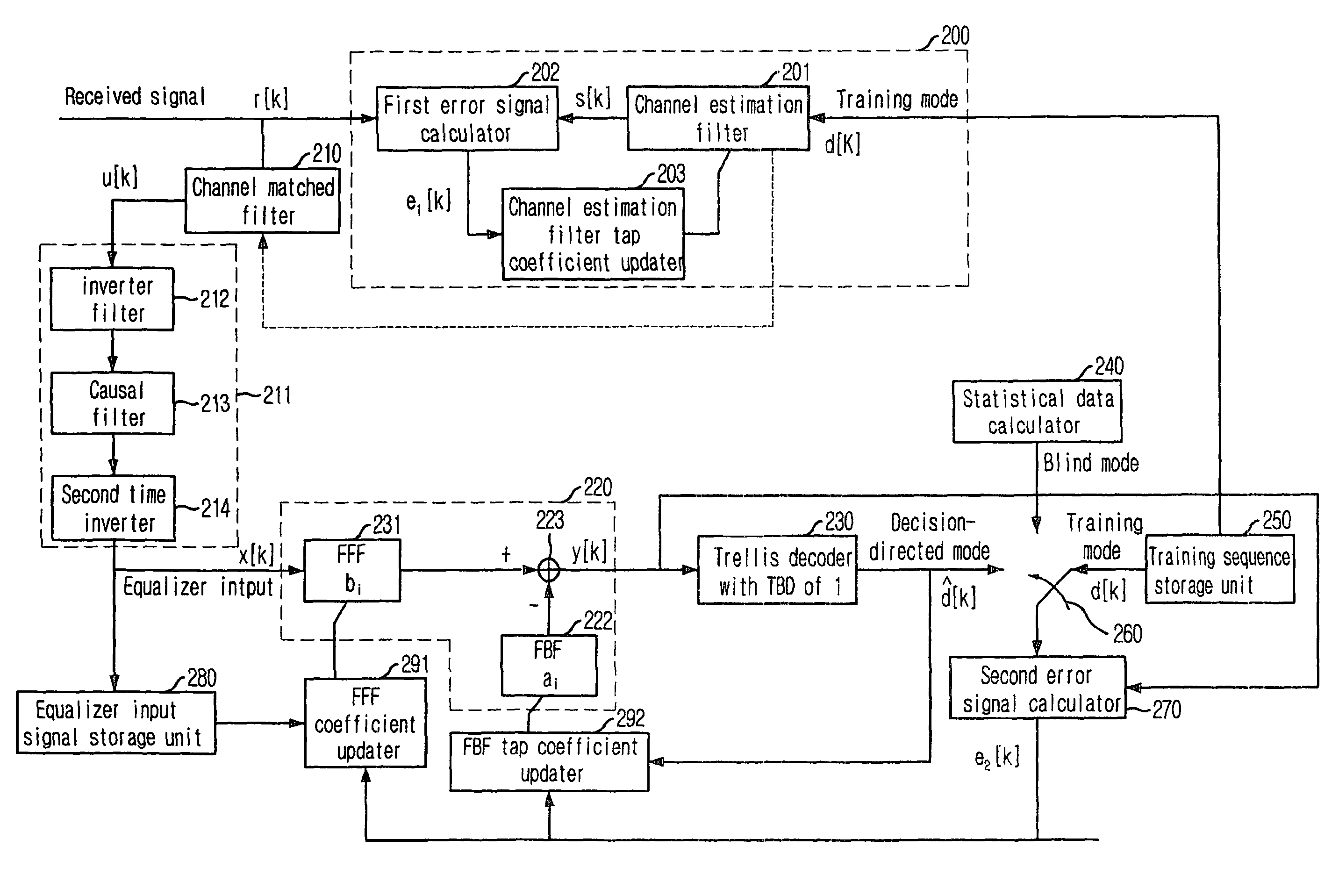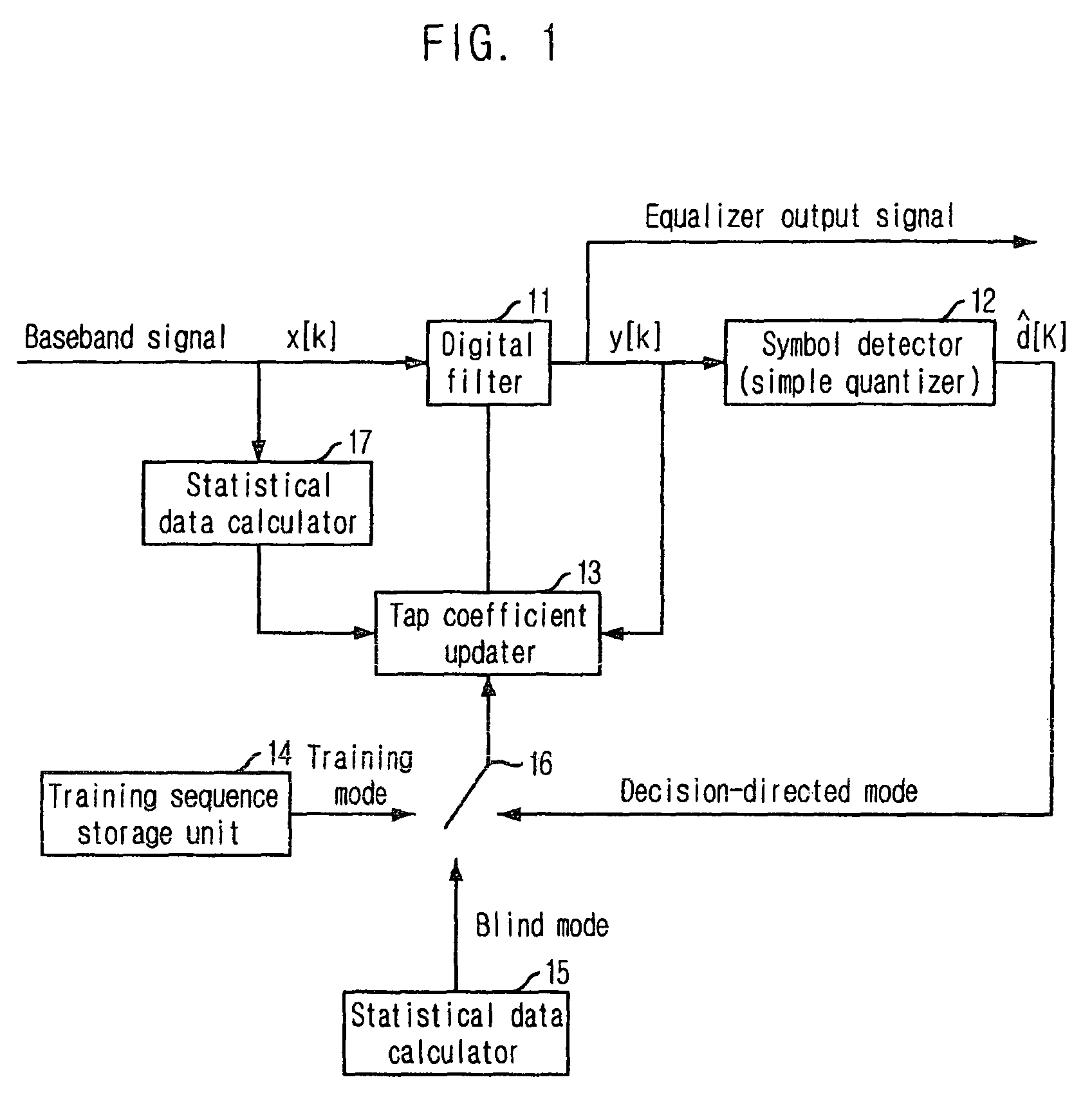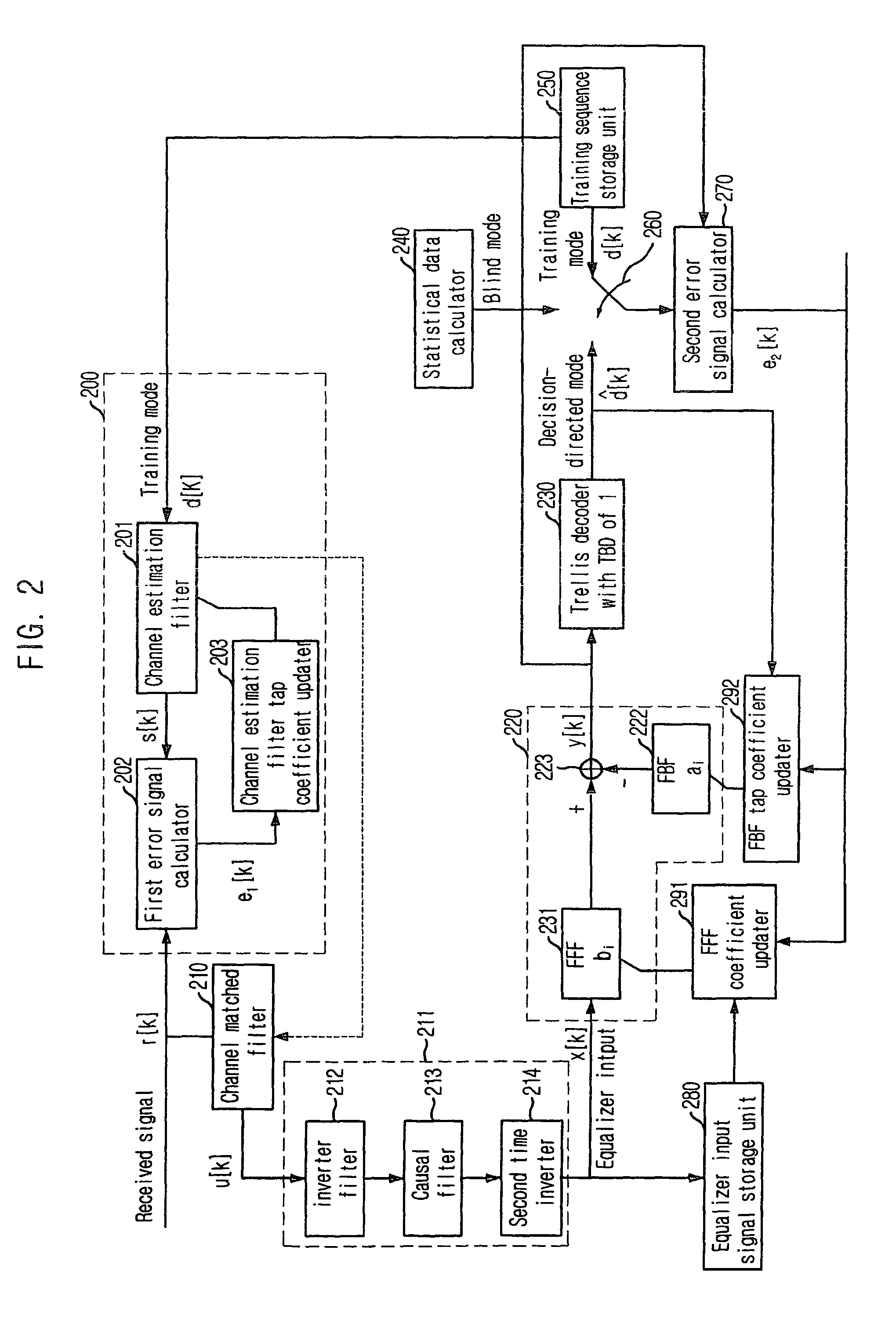Apparatus for equalizing decision feedback based on channel properties change and method therefor
a decision-based feedback and channel technology, applied in the field of channel equalization techniques, can solve problems such as obstacles in obtaining required data, data transmission affected by a variety of channel distortions, interference occurred in adjacent symbols, etc., to improve convergence speed and stability of digital filter units, reduce decision errors, and reduce complexity
- Summary
- Abstract
- Description
- Claims
- Application Information
AI Technical Summary
Benefits of technology
Problems solved by technology
Method used
Image
Examples
Embodiment Construction
The above-mentioned objectives, features, and advantages will be more apparent by the following detailed description in association with the accompanying drawings; and thus, the invention will be readily conceived by those skilled in the art to which the invention pertains. Further, in the following description, well-known arts will not be described in detail if it seems that they could obscure the invention in unnecessary detail. Hereinafter, preferred embodiments of the present invention will be set forth in detail with reference to the accompanying drawings.
In the following embodiments, a description will be provided as illustration on a case that the present invention is applied to an 8-Vestigial SideBand (VSB) system that is American-type terrestrial TV standard; but it should be noted that the present invention is not limited to such an illustration.
FIG. 2 is a block diagram illustrating a configuration of a DFE apparatus in accordance with an embodiment of the present inventi...
PUM
 Login to View More
Login to View More Abstract
Description
Claims
Application Information
 Login to View More
Login to View More - R&D
- Intellectual Property
- Life Sciences
- Materials
- Tech Scout
- Unparalleled Data Quality
- Higher Quality Content
- 60% Fewer Hallucinations
Browse by: Latest US Patents, China's latest patents, Technical Efficacy Thesaurus, Application Domain, Technology Topic, Popular Technical Reports.
© 2025 PatSnap. All rights reserved.Legal|Privacy policy|Modern Slavery Act Transparency Statement|Sitemap|About US| Contact US: help@patsnap.com



